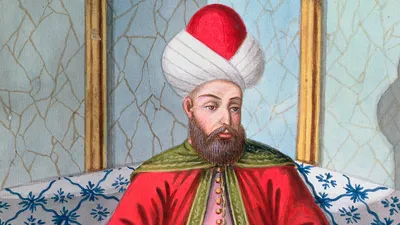When we purchased our home we were told that it was thought to be around 120 years old. However, discovering the secret room changed all of this. Such secret rooms were built during the Ottoman occupation of Bulgaria. The occupation ended in 1878. Towards the end of the occupation things were more lenient so it is doubtful that the secret room was installed in the last few years proceeding this. We are guessing that the house must’ve been built at least 20 years prior. This makes it at least 175 years old – possibly much older as we will show. This blog post will explain the purpose and history of such secret rooms.

The ottoman Occupation
The Ottoman Empire was characterised by almost continuous territorial expansion. Eventually the Ottomans controlled the majority of southeast Europe. They took political, economic, social, and religious control over the regions they conquered. The regime lasted for over 600 years until it was replaced in 1922 by the Turkish Republic.
The Ottoman rule was particularly oppressive as was recognised by English prime minister WilliamGladstone. (1809 – 1898). He wrote a pamphlet “The Bulgarian Horrors and the Question of the East” (1876). You can find a copy of the original pamphlet here. The atrocities included the burning of many villages and the killing of women and children.

it was ruler OrhanOrhan ( 1324–60) who initially introduced the concept of using Christian mercenaries in his desire to expand Islam. But it was Murad (1421–51) who began to build up the power of various non-Turkish groups in his service, particularly those composed of Christian slaves and converts to Islam. This military arm was organized into a new infantry organization called the Janissary.
These foreign soldiers were much easier for the sultans to control, compared to free administrators of Turkish aristocratic lineage.
The Jannisary and the Devshirme
Yeniçeri – translated as “New Force”- was an elite group respected for their military accomplishment. Murad sought to build this elite group adding the devşirme system. These were young men from Christian homes who were drafted into the service of the Ottomans and forcibly converted to Islam. Jannisarone’s were often taken during military raids. Whereas the Devshirme were selected by hand.
Christian children were taken from their homes by Ottoman officials every four to seven years, their age ranging from 7 to 20. One for every forty households was chosen, they had to be unmarried and once taken were ordered to cut all ties with their family.
In addition to stealing their children, the Ottoman soldiers would then demand that the family pay for the child’s transport to Istanbul and their new uniform. The boys village, district and province, parentage, date of birth and physical appearance were all recorded.
Parents who resisted were put to death. If the boys try to run away then the parents were tortured.
These children were subject to an arduous training program, underfed and often ill treated. History teaches us that they were beaten and humiliated often very severely. Some were even castrated in order that they could be employed in theSultan’s Harim. For those who did well it was not unheard of for them to eventually obtain positions of authority within the Ottoman rule.
The purpose of the secret room
And this is where our secret room comes into operation. The Devshirme were taken mainly from the Balkans a punishment for a previous uprising.
To avoid this practice parents would hide their boy children in secret rooms inside of their houses. They would often also provide an escape route into neighbouring properties. Both of these architectural peculiarities can be seen in our own property.
Parents would even go as far as marrying their sons at the age of 12 and even disfiguring them in order that they would not be taken.
Traditional Folk Song Recording this Practice
In Epirus we find this traditional folk song expressing the resentment this practice caused;
Be damned, O Emperor, be thrice damned
For the evil you have done and the evil you do.
You catch and shackle the old and the archpriests
In order to take the children as Janissaries.
Their parents weep and their sisters and brothers too And I cry until it pains me;
As long as I live I shall cry,
For last year it was my son and this year my brother.
I can’t even begin to imagine what the people who owned our property must’ve felt like knowing that their beloved son could be taken in such a barbaric manner.

Illustration of an Ottoman official and his assistant registering Christian boys for the devshirme.
Yet another mystery of the secret room
Finally, in the early days of Ahmet III‘s reign, the practice of devshirme was abolished. He lived between December 1673 – 1 July 1736. If our secret room was actually built for this purpose – which we are assuming it was – then this adds an extra hundred years at least onto the anticipated age of our home.
This date would also coincide with that suggested to us by a very knowledgeable viewer who specialises in timber frame structures. Looking at the architecture of our particular property she pointed out that the roof structure was not in keeping with other Bulgarian properties of the original date originally suggested to us .
I would love to explore documentation pertaining to the history of our village and in particular this property. However, this process is hindered not just by our lack of understanding of the Bulgarian language but also the derrh of historical literature. As Bulgaria has suffered under the hands of an invading force for such a long period of its history, much historical evidence was either lost or never even able to be collected in the first place.


